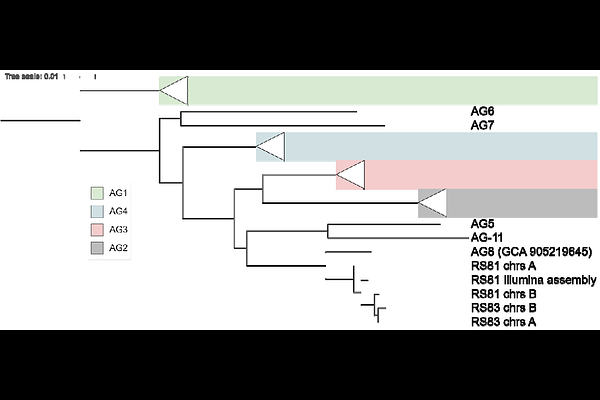The fungal pathogen Rhizoctonia solani AG-8 has two nuclear haplotypes that differ in abundance

The fungal pathogen Rhizoctonia solani AG-8 has two nuclear haplotypes that differ in abundance
Sperschneider, J.; DeBoer, K.; Singh, K. B.; Vadakattu, G. V.; Anderson, J.
AbstractThe fungal pathogen Rhizoctonia solani infects a diverse range of host plants and remains an intractable and economically significant disease for many crops. R. solani is classified into reproductively incompatible anastomosis groups (AGs). In the vegetative stage, most plant-pathogenic R. solani isolates are multinuclear and heterokaryotic, but little was previously known about the diversity between haplotypes due to highly fragmented, collapsed short-read assemblies. We present fully-phased, chromosome-scale genome assemblies of the broad host-range R. solani isolates AG8-1 and AG8-3. We demonstrate that both AG8 isolates have two distinct haplotypes, each of which is ~50 Mbp spread across 16 chromosomes and use PacBio Iso-Seq data to achieve a high-quality gene annotation. We show that the two nuclear haplotypes display high heterozygosity and differences in haplotype abundance in vegetative cultures. Using transcriptome sequencing during infection of three types of host plants, we show that the less abundant haplotype in both AG8-1 and AG8-3 harbour more genes up-regulated during infection. Taken together, these findings address some of the observed phylogenetic heterogeneity of AG-8 isolates and provide a platform to further dissect the mechanisms enabling this globally significant agricultural pathogen to inflict losses to a range of crop hosts.